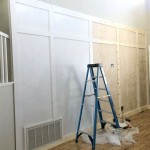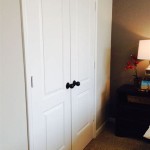A mood board is an essential tool for interior design, helping you to create a space that reflects your personality and style. By collecting images, colors, textures, and other design elements, you can create a visual representation of the interior design you are aiming for. In this article, we will explore how to create a mood board for interior design and what elements to include in order to create a creative, inspiring space.
What is a Mood Board?
A mood board is a collage of images, colors, textures, and other design elements used to create a visual representation of the interior design you are aiming for. It acts as an inspirational guide when designing a room, allowing you to see the overall look and feel of your design before you start putting it together. Mood boards can be created in a variety of ways, from physical boards to digital boards.
What to Include in a Mood Board
When creating a mood board for interior design, it is important to include a variety of elements. Here are some key elements to include:
- Colors: Start with a general color palette, then add in accent colors. Consider how colors will work together to create the desired mood.
- Textures: Think about the textures you want to incorporate into the design, such as wood, metal, stone, etc.
- Furniture: Select furniture pieces that will fit in the space and complement the colors and textures you have chosen.
- Accessories: Choose accessories such as artwork, rugs, and lighting that will add personality and style.
Creating a Mood Board
Once you have chosen the elements you want to include, it’s time to start creating your mood board. You can create a physical mood board by printing out images and arranging them on a board, or you can use a digital board, such as Pinterest or a design tool. When creating a digital board, be sure to save your images in a way that will make them easy to find and access later.
Tips for Creating a Successful Mood Board
Creating a successful mood board is key to achieving the interior design you desire. Here are some tips for creating a successful mood board:
- Start with a general theme: Choose a theme or style that you want to create. This will help you stay focused and make sure all the elements you choose fit together.
- Include a variety of elements: Don’t limit yourself to just colors and textures. Think about the furniture, artwork, and other accessories that you want to include.
- Be flexible: Don’t be afraid to make changes as you go. Mood boards are meant to be a guide, not a set of rules.
Conclusion
Creating a mood board for interior design is a great way to create a space that reflects your personality and style. By collecting images, colors, textures, and other design elements, you can create a visual representation of the interior design you are aiming for. With these tips, you can create a successful mood board that will help you create a creative, inspiring space.















Related Posts








